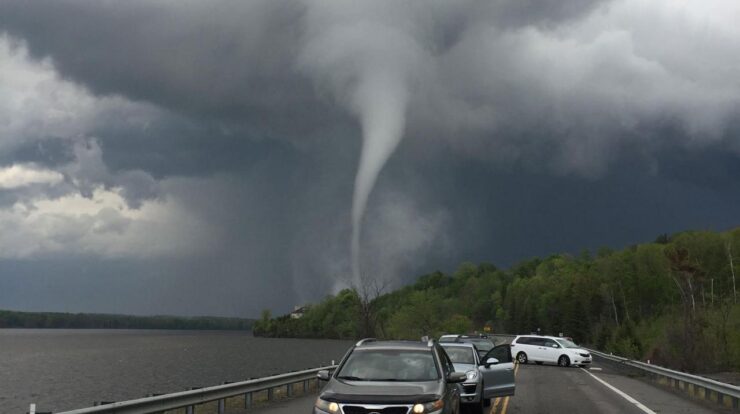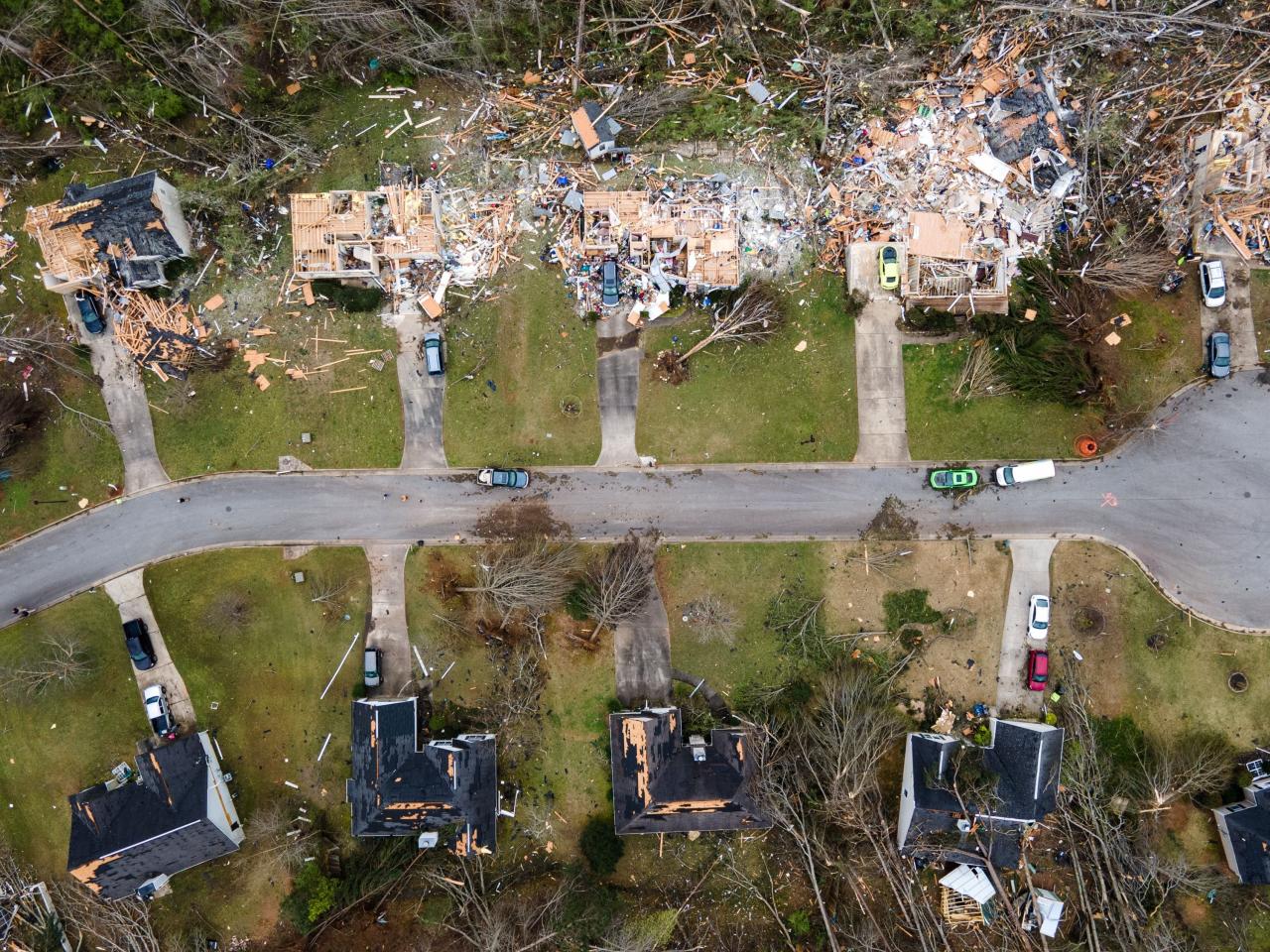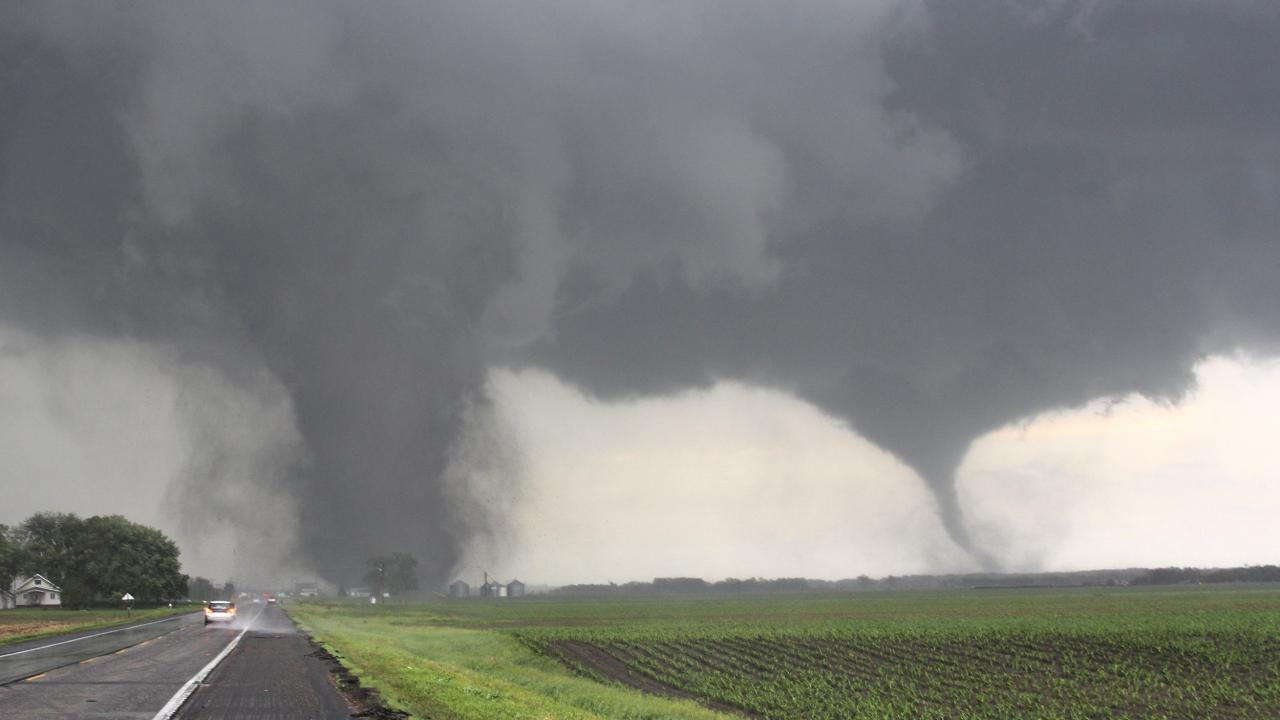
Tornadoes today pose a significant threat to communities worldwide, leaving a trail of destruction and posing risks to lives and property. Understanding these powerful storms is crucial for preparedness and safety. This article delves into the formation, detection, safety measures, and impacts of tornadoes, providing a comprehensive guide for individuals and communities.
From the atmospheric conditions that give rise to tornadoes to the latest forecasting and warning systems, this article explores the complexities of these storms. It also emphasizes the importance of community preparedness and drills, as well as the role of technology in mitigating tornado impacts.
Tornado Formation and Characteristics

Tornadoes form when warm, moist air rises rapidly through unstable atmospheric conditions, creating a rotating column of air. The specific conditions necessary include high levels of moisture, wind shear, and instability in the atmosphere.
Tornadoes vary in intensity and structure. Weak tornadoes, known as weak tornadoes, have wind speeds of up to 110 mph and typically cause minimal damage. Strong tornadoes, known as strong tornadoes, have wind speeds of 111-165 mph and can cause significant damage to structures and infrastructure.
Violent tornadoes, known as violent tornadoes, have wind speeds exceeding 165 mph and can cause catastrophic damage, leveling entire communities.
Types of Tornadoes, Tornadoes today
- Supercell Tornadoes:The most common type, formed from a single thunderstorm cell with a rotating updraft.
- Landspout Tornadoes:Weak tornadoes that form from shallow cumulus clouds, often associated with dry lines.
- Waterspout Tornadoes:Tornadoes that form over water bodies, often connected to thunderstorms.
Tornado Forecasting and Detection: Tornadoes Today

Meteorologists use a variety of methods to forecast and detect tornadoes, including:
- Weather Forecasting:Monitoring weather patterns and identifying atmospheric conditions favorable for tornado formation.
- Doppler Radar:Detects wind speeds and rotation within thunderstorms, providing early warning of potential tornadoes.
- Spotter Networks:Trained volunteers who report tornado sightings to the National Weather Service.
Tornado warning systems are used to alert the public of impending tornadoes. The most common type is the tornado warning issued by the National Weather Service, which provides information on the location, direction, and intensity of the tornado.
Tornado Safety and Preparedness
To stay safe during a tornado, it is crucial to take the following precautions:
- Before a Tornado:Have an emergency plan, identify a safe place to shelter, and gather essential supplies.
- During a Tornado:Seek shelter immediately in a basement, interior room, or storm cellar. Stay away from windows and doors.
- After a Tornado:Check for injuries, report damage to authorities, and avoid downed power lines.
Community preparedness plans and drills are essential for effective tornado response. These plans Artikel evacuation routes, shelter locations, and communication protocols.
Tornado Impact and Damage Assessment
Tornadoes can cause severe damage to buildings, infrastructure, and the environment:
- Structural Damage:Tornadoes can destroy homes, businesses, and other structures, causing billions of dollars in damage.
- Infrastructure Damage:Tornadoes can damage roads, bridges, power lines, and other critical infrastructure, disrupting essential services.
- Environmental Damage:Tornadoes can uproot trees, destroy crops, and pollute water sources.
Case studies of significant tornado impacts include the Tri-State Tornado of 1925, the Moore, Oklahoma tornado of 2013, and the Joplin, Missouri tornado of 2011.
Tornado Research and Mitigation
Ongoing research efforts aim to improve understanding of tornado behavior and forecasting capabilities. This includes:
- Observational Studies:Collecting data on tornado formation, intensity, and movement.
- Modeling and Simulation:Developing computer models to simulate tornado behavior and predict their paths.
- Mitigation Strategies:Developing and implementing measures to reduce tornado damage, such as early warning systems and storm shelters.
Success stories in tornado mitigation include the implementation of the Enhanced Fujita Scale and the development of mobile tornado warning apps.
Tornado Climatology and Trends
Tornadoes occur globally, but their distribution and frequency vary by region.
Tornado frequency has shown an increasing trend in some regions, particularly in the central and eastern United States. This trend is attributed to changes in atmospheric conditions and climate patterns.
Climate change is expected to influence tornado activity, potentially leading to more frequent and intense tornadoes in certain regions.
Tornado Media Coverage and Public Perception
The media plays a significant role in shaping public perception of tornadoes. Accurate and timely reporting can help raise awareness and promote safety measures.
However, sensationalized or inaccurate reporting can lead to fear and misinformation. Social media has become an important platform for disseminating tornado information, but it can also contribute to the spread of false rumors.
Last Word

Tornadoes remain a force of nature that demand respect and understanding. By staying informed about their formation, detection, and safety measures, individuals and communities can be better prepared to face these storms and minimize their impacts. Ongoing research and mitigation efforts hold promise for improving forecasting and reducing tornado-related damage in the future.
Question Bank
What are the signs of an approaching tornado?
Dark, rotating clouds, a funnel-shaped cloud descending from the base of a thunderstorm, and loud, rumbling sounds are common signs of an approaching tornado.
What should I do if I see a tornado?
Seek shelter immediately in a sturdy building, basement, or underground storm shelter. Stay away from windows and exterior walls, and lie down flat in a low-lying area.
How can I stay informed about tornado warnings?
Monitor local weather forecasts and alerts, sign up for weather apps that provide real-time warnings, and have a battery-powered radio on hand for updates during power outages.





